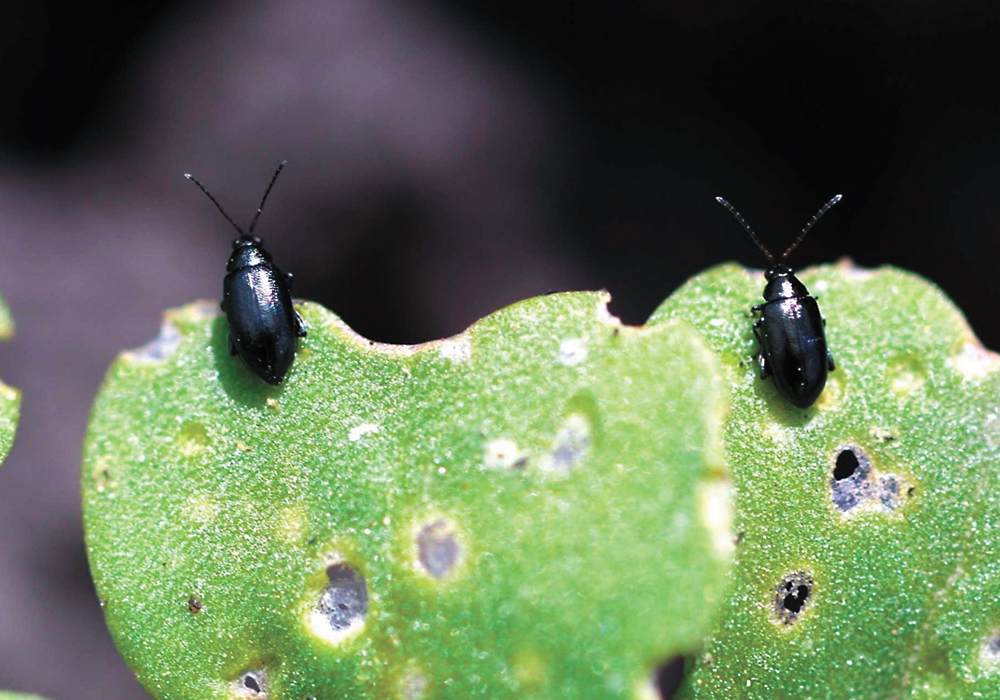Flea beetles are feasting on canola plants this spring and if it doesn’t rain, soon, there’s a chance that things could get worse for canola growers.
On hundreds of fields in Alberta, Saskatchewan and Manitoba, the pests have been chewing on canola plants that developed slowly because of dry conditions in May and early June.
“I know a lot of (canola) seed got stranded and didn’t even germinate for two (or more) weeks after seeding,” said Angela Brackenreed, Canola Council of Canada agronomist in Manitoba.
Read Also

Canadian Food Inspection Agency red tape changes a first step: agriculture
Farm groups say they’re happy to see action on Canada’s federal regulatory red tape, but there’s still a lot of streamlining left to be done
Rain fell on many parts of Manitoba June 7, which should spur canola growth and help plants withstand flea beetle pressure. But as of June 10, it remained dry in much of Saskatchewan and flea beetle damage could persist into the third week of June.
“At this point I would say (flea beetles) are marginally worse (than previous years),” said James Tansey, pest management specialist with Saskatchewan’s ministry of agriculture. “(But) if these dry conditions continue and the flea beetle populations stay active, there is a possibility of it being a very bad flea beetle year.”
In Manitoba, the flea beetle situation varies from field to field, said John Gavolski, Manitoba Agriculture entomologist,
“(In some fields) just because of a timing issue and how slow the plants are growing, they’re being hit and (growers are) having to do foliar spraying.”
The story is similar in other parts of the Prairies. Growers in multiple regions of Saskatchewan, near Saskatoon, around Swift Current and close to Moose Jaw, have been using foliar insecticides to control flea beetles.
However, in many cases, a foliar insecticide is not economical and growers should evaluate a few factors before spraying:
- Is there more than 25 percent defoliation on canola plants?
- Does the field have an active population of fiea beetles?
- What’s the stage of the crop?
The Canola Council of Canada urges growers to spray based on conditions in their crop, not because their neighbours are doing it.
“In areas where lots of spraying seems to be happening, two of our Saskatchewan agronomists checked their own canola fields and found minimal feeding. They’re not spraying,” the council said in early June. “The better-safe-than-sorry approach may be a waste of time and money and unnecessarily threatens all the beneficial insects in a field.”
That’s reasonable advice but it can be frustrating for farmers to spend more than $200 per acre on a canola crop, then have flea beetles show up and devour the leaves of young canola plants.
Dozens of canola growers have used Twitter to vent their frustrations with flea beetles. Chris Allam, a farmer near Edmonton, neatly described the mood of many canola producers in a June 5 post.
“(I’m) thinking the Chinese should change their zodiac sign of 2019 to the year of the cutworm or flea beetle. (We) might have less canola to not trade with them.”
















